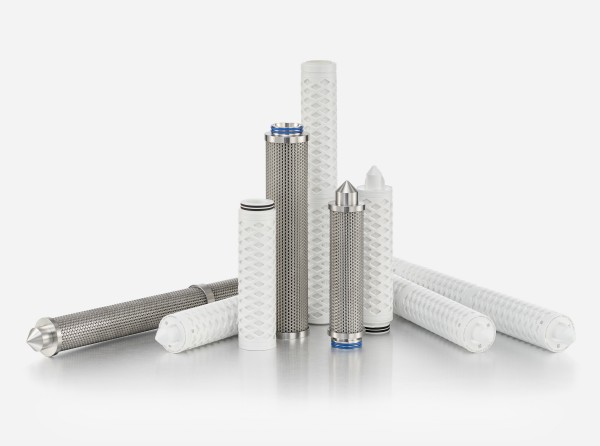Long before the Food Safety and Modernization Act (FSMA) was passed in 2011, food processors in the U.S. were legally required by the Code of Federal Regulations (21 CFR 110) to produce safe and wholesome food. In addition to compliance, caring for consumers and your brand are additional reasons to address potential hazards in your facility.
Over the years, methods for improving food safety have been spelled out in a variety of industry guidelines and standards. These are management approaches or equipment designs that help improve food safety and quality. One practical guideline is a Hazard Analysis of Critical Control Points (HACCP) plan. In fact, it’s required for some processors.
What is a HACCP plan?
In a HACCP plan, the process owner identifies all “critical control points” within the process. These are locations where a biological, chemical, or physical contaminant could potentially enter the process and/or contaminate the product. For each point identified, the facility enacts measures that will manage the hazard to acceptable limits.
Why do utilities matter in a HACCP plan?
Whether a HACCP plan is required or voluntary for your business, filtration should be a major component.
Compressed air, gases such as nitrogen, water and other liquids, and industrial or culinary steam are common in most food processes. These utilities are leading sources of oil, microbes, or particulates either brought in from external sources, or picked up in process equipment. The chief control measure for these utility risks is filtration.
How are HARPC and HACCP plans different— and which applies to my facility?
Hazard Analysis and Risk-based Preventive Control (HARPC) planning addresses risks across a company’s entire supply chain. Virtually every facility is required to have a HARPC food safety plan under the Food Modernization and Safety Act of 2011.
HACCP planning focuses on managing contamination risks within the process itself. FMSA requires HACCP plans for juice, seafood, poultry, and meat processors, but recommends it for all food processors.

Where is filtration generally needed for utilities?
In general, there are typically three areas where utility contamination risks occur and where filtration is so important:
1. Utility Rooms
The utility room is where water lines, boilers, tanks, and generators are located. Since this is the starting point for utilities distributed throughout the plant, any contamination in water, air/gasses, or steam at this early point can travel downstream.
Pre-filtration is important as the utilities exit this area and enter the process.
2. Points of Use
After traveling through plant piping or tanks, utilities may have direct or indirect food contact downstream. Filters provide processors an important step before the utility is used in the process. Sterile air, sterile liquid, and culinary steam filters are best placed at the point of use on each utility line.
3. Before Packaging
Prior to sealing, there may be a final opportunity to remove remaining contaminants. Any water, steam, or compressed air used to form, clean, or open packaging should first be filtered as well.
How do I filter the liquid, air, and steam in my process?
Every food process is unique and subject to specific industry guidelines, such as 3-A Sanitary Standards, British Retail Consortium (BRC), or others. However, there are general principles that apply to utility filtration in most food processes. Here are the unique hazards for each utility, and best practices for filtering at critical control points.
Air and Gas
Uses and Hazards
Compressed air moves ingredients, texturizes food, dries equipment, and blow-molds containers. Other gases used in food processing are pure oxygen, carbon dioxide, and nitrogen. With the presence of condensation and lubricants, equipment that generates or stores these utilities can be a breeding ground for microorganisms. When supply tanks are used, changing tanks can also expose open lines to airborne contaminants.
Tip: To best capture oil and condensation from compressed air, choose a filter that is oleophobic and hydrophobic—and has been tested in a wet condition.

Filtration Practices
In the utility room, condition compressed air so it remains dry and oil-free as it enters the process. This can be done with a cyclone separator to spin out bulk liquid, one or more 1- to 5-micron coalescing pre-filters to catch oil aerosols, and an adsorption air dryer to remove remaining vapors. Downstream, where sterile air is required in the process, filter each point of use with an absolute rated 0.2-micron final filter on injection equipment.
Water
Uses and Hazards
Process water is used for washing and sterilizing, rehydration and cooking, heating boilers, and driving product recovery systems. Municipal pipes and wells can both carry debris, and equipment such as boilers may degrade and introduce sediment over time. When ingredient water is required, the activated carbon used in de-chlorination can itself become a food source for a bacterial biofilm that fouls expensive reverse osmosis (RO) membranes.
Tip: If your RO membrane is lasting two years or less due to biofilm build-up, improve the pre-filter. A pleated depth media with verified capture efficiency will provide superior RO protection and save costs.

Filtration Practices
In the utility room, source water should be pre-filtered with a nominal polypropylene depth filter of 10 microns—an acceptable level for steam-in-place (SIP) or clean-in-place (CIP) use. For higher levels of suspended solids, a series of 50-, 20-, or 10-micron liquid pre-filters may be necessary. On water lines dedicated to your washing, cooking, blending, or injection stations—direct and indirect food contact—place bacterial-retentive sterile filters of 0.2 microns. This grade produces pasteurized-equivalent water.
Steam
Uses and Hazards
Plant-grade steam is an indirect heat source, and culinary-grade steam is used to cook food by injection, or to sterilize food-contact surfaces. While steam temperatures resist microbial growth, corrosion is a greater contamination risk in carbon or galvanized steel steam lines, which are under constant condensation and heat. Rust can contaminate the food product, clog spray lines, and damage stainless steel equipment.
Filtration Practices
Keeping steam relatively dry reduces corrosion risks and minimizes boiler water entering your product. To remove bulk condensation, place a coalescing pre-filter (called an entrainment separator) on each steam line right before the pressure reduction valves in your process. Reduced condensation helps to keep the valves from wearing out prematurely. Then, at each point of use, place a final steam filter. Culinary-grade steam for direct injection or CIP/SIP use requires filtration that removes 95% of 2-micron particles.
Tip: At higher temperatures and pressures, carbon tube filters can shed particles. Specify high-grade stainless steel—especially if your process is regulated by the Pasteurized Milk Ordinance.
Are There Rules of Thumb for Filtration Lay-out?
Effective and Efficient
Filtration is all about the right efficiency at the right micron size in the right location. Here are important principles to keep in mind as you map out your air/gas, liquid, and steam filtration system and then maintain it:
- Redundancy: Filters at multiple points on a utility line are more reliable than one filter alone. Use a sequence: Protect expensive microfilters downstream by installing pre-filters upstream.
- Distance: System lines between the utility room and the food-contact point can introduce condensation, oil, debris and microbes. Place final filters as close as possible to points of use.
- Maintenance: Use pressure gauges upstream and downstream of filters to monitor sudden pressure fluctuations, which could indicate damage. Change filters at a pre-determined pressure drop.
How Can I Know a Filter Will Be Effective?
On filter labels, capture efficiency is expressed as “load reduction values” or LRV. This refers to the percentage of upstream contaminants a filter is able to reduce. A 7-log LRV means a 0.2-micron filter has been verified to reduce 99.999998% (7 nines) of challenge contaminants at a diameter of 0.2 microns. Donaldson filters are all rated at an LRV of 7, the industry’s highest standard.
What Should I Know About Selecting Filters?
Select filter elements carefully. Filtration manufacturing is not standardized, so it pays to consultant technical data sheets. Partner with a filter manufacturer who can help you understand their products, and also consider these issues:
- Ratings: Look for an efficiency rating (percentage of capture), not just a micron size. A filter labeled “absolute” at 2 microns, for example, should be verified in tests by the manufacturer to capture 99.98% of all 2-micron particles.
- Filter Media: Look for long-lasting filters, look for cartridge media vs. melt-blown elements. Pleated cartridge filters have 12 times the surface area and depth-loading capacity, which support long filter life.
- Certification: Look for equipment and products that display the 3-A symbol. It means an independent third party has verified their sanitary design, including grade of steel and minimal harbor points for bacteria.
- ROI: Think in terms of both integrity and life cycle. The harsh conditions of processing, cleaning, and sterilization can wear out filters quickly. As indicated earlier, melt-blown filters may be cheaper initially, but pleated filters by a reputable manufacturer may tolerate more sterilizations and provide greater capture efficiency—to manage contamination risks, while reducing overall costs.
An Important Caveat About Sterile-Air Filter Labeling
Don’t assume that a filter labeled to capture very tiny particles (such as 0.01 microns) is better than a 0.2-micron filter. This is a claim made by some manufacturers that can be confusing. In reality, 0.01-micron particles are quite easy to trap because they move in erratic paths—a principle known as Brownian Movement. A 0.2-micron particle is the hardest particle size to capture, and on average, the size of the smallest bacteria potentially present in your process. If your application requires a sterile air filter, for example, it’s imperative to use a 0.2-micron filter rated at a high capture efficiency. Food and beverage industry standards call for a Log Reduction Value (LRV) of 5 or greater, which requires use of a filter that has been verified to capture 99.9998% of contaminants. Donaldson filters exceed this standard with a verified LRV of 7.
Are There Resources to Get Started on Best-Practice Filtration?
There are multiple standards and regulations governing sterile air, steam, and liquids used in processing. For a guide to current standard-setting bodies and what processes or equipment they address, download our Regulatory and Best Practices Overview.
Although every facility is unique, there are commonalities across plants that produce certain foods and beverages. Donaldson has developed several Filtration Design Maps for specific applications. Remember, that these are for starting your design thinking and should not be used without individual verification for your specific facility and processes.












